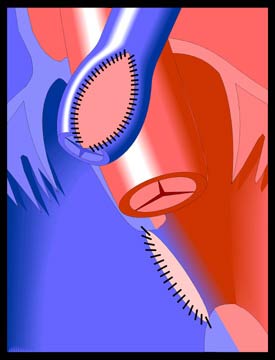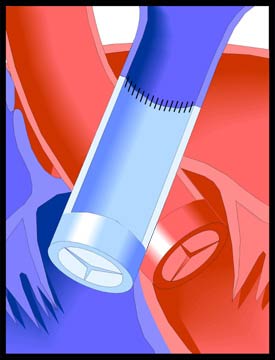| Valve and Conduit Replacements |
|
|
 |
|
Tetralogy of Fallot - Pulmonary Valve Replacement
After repair of Tetralogy of Fallot in childhood, young adults will often require replacement of the pulmonary valve because of the development of arrhythmias, pulmonary or tricuspid valve regurgitation, calcification of the pulmonary valve, physical incapacity, or other symptoms. The pulmonary valve and lower portion of the pulmonary artery are replaced by a pulmonary homograft (transplanted from another human being) or a porcine (pig) bioprosthesis.
Pulmonary valve replacements are usually performed without significant risk and result in the decrease in symptoms as well as improved right ventricular function. As with all patients who have undergone valve replacements, these patients should be monitored for pulmonary valve efficiency.
Most surgically implanted valves will last 10-20 years before they wear out, become obstructed, or lose efficiency. When their function becomes impaired for any of these reasons, replacement becomes necessary.
Early forms of Tetralogy of Fallot repair involved the use of large patches covering parts of the pulmonary artery and right ventricle. The valve replacement operation may also provide an opportunity to remove much of this patch material and improve cardiac function. |
|
 |
|